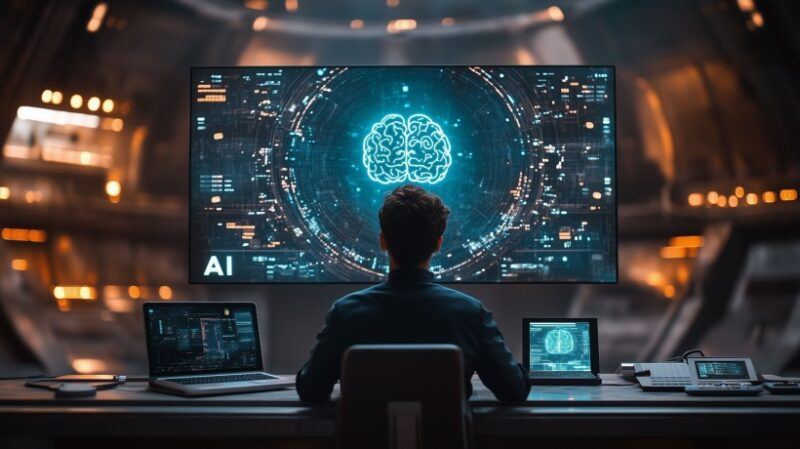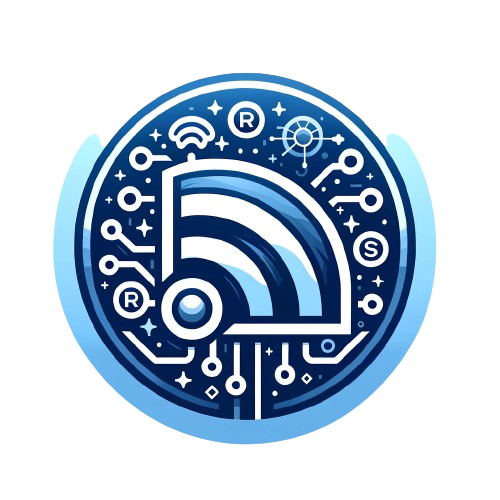
The Future Of AI In eLearning
As we’ve already discussed, AI is shaping how we teach, learn, and design educational experiences in every possible way. Generative AI, in particular, has made a difference in eLearning. It doesn’t just create lessons and quizzes on the spot or suggest courses. AI designs content intelligently, offers real-time feedback, allows learners to adapt their learning paths, and can even act as a virtual tutor. It’s clear that eLearning as we know it has changed. Most importantly, though, the smarter AI gets, the more accessible it is, too. Tools that were only used by big companies are now available to schools, course creators, and anyone with a Wi-Fi connection. Whether you’re building a course for corporate training or designing a digital classroom for kids, AI is there for you.
But this may make you wonder: what does the future hold if all these are real and here now? AI is still in its early stages, and we’ve yet to see how deeply it will shape the way we learn. In this article, we’ll explore the trends that are already changing eLearning and how you can prepare for the future, whether you’re an educator, a student, or an Instructional Designer.
5 Emerging AI Trends That Will Shape eLearning
1. AI Classrooms
Thanks to AI, online classrooms are more personalized and engaging. AI-driven virtual classrooms aren’t about video calls or slides anymore. They include intelligent systems that adapt on the spot to each learner’s pace, language, and engagement level. For example, learners attend a virtual class where AI translates everything in real time, no matter where they’re logging in from. These classrooms also have virtual teaching assistants powered by generative AI. The assistants can answer students’ questions, provide extra resources, or even summarize the lesson while the teacher focuses on teaching. In remote or hybrid learning settings, this allows for a more consistent and high-quality education, which makes the experience more meaningful for everyone.
2. Chatbots
Speaking of virtual assistants, let’s talk about AI-powered chatbots. People learn at their own pace and schedule, but what happens when they need an answer right now when no one’s available? Well, AI chatbots are always available. They’re designed to answer questions live, explain complex topics, and even offer tips if someone’s falling behind. For students, this gives them more control of their learning experience since they no longer have to wait for their teacher or instructor to answer. In the workplace, AI chatbots are used in onboarding and training. New hires can get instant answers about processes, policies, or tools. And, as AI continues to evolve, the chatbots will only get smarter, making education and training more accessible than ever.
3. AI-Powered Immersive Learning
With tools like Augmented Reality (AR) and Virtual Reality (VR) enhanced by generative AI, learning becomes a more practical and actually engaging experience. For instance, people who are studying medicine can walk through a life-like hospital simulation where they respond to patient needs, make decisions under pressure, and even perform medical procedures. AI makes these environments adaptive, so if they make a mistake, the simulation adjusts and challenges them more. It’s also used for soft skills like negotiation, leadership, or even conflict resolution.
4. AI Assessments
Traditional assessments aren’t always the best way to evaluate what someone really knows or how they use it in the real world. However, AI-enhanced assessments may be more suitable. Why? Because they are more dynamic and personalized. Instead of a generic test given to all learners, you can assess them through live simulations, for example. Plus, these assessments include behavioral data, such as how learners react under pressure, how long they take to make decisions, etc. AI can also analyze written responses in tests, offering immediate feedback. For instructors, it can point out specific areas where students struggle, helping professionals support their class more.
5. Emotionally Aware AI
Emotions are closely related to learning, as they can affect it. One moment, you’re feeling confident and motivated, and the next, you’re disappointed because of a small mistake or you fear failure. Thankfully, emotionally aware AI systems can recognize and respond to human emotions. Specifically, your AI-powered eLearning platform can detect when a student is frustrated, maybe from the tone of their voice, their typing speed, or even facial expressions via webcam, given the necessary permissions. So, instead of pushing them further, the system might offer a simpler explanation, an encouraging message, or even suggest a quick break. Of course, emotionally aware AI must be used ethically, with clear data privacy and consent boundaries.
Preparing For The Future
Teachers: Training On AI
To get the most out of AI, it’s important for educators to train. This means learning how to interact with AI tools in ways that produce the best results, such as crafting effective prompts for content creation or using AI-powered platforms to create exciting learning experiences. Another crucial skill is evaluating AI-generated materials. While AI can be helpful, teachers still need to assess content for accuracy, relevance, and alignment with goals. Thus, it’s best to find the balance between AI and teaching.
Students: Learning With AI
For students, the future of learning with AI is all about using these tools responsibly and effectively. The first step is for them to explore how these tools work, ask questions, and dive deeper into the lessons with the support of AI. Moreover, learners must be able to assess the quality of the information AI provides them by boosting their critical thinking. It’s also important to understand AI’s limitations. It can’t replace human creativity, so they still need to add their own voice and perspective.
Instructional Designers: Mixing AI With Creativity
AI can help Instructional Designers automate and speed up the content creation process. AI-driven video creation, graphics, and interactive presentations can save Instructional Designers hours while still producing high-quality materials. These platforms handle repetitive tasks while professionals focus on creating experiences and boosting learner engagement. However, it’s important for them to maintain their creativity. They’re still the experts in shaping how content is structured, so they should use AI as a companion, not a replacement.
Conclusion
AI can make eLearning more inclusive, personalized, and engaging for everyone. But simply using it will not do; we must learn to embrace change. Teachers, students, and Instructional Designers can collaborate, experiment with new tools, and find ways to enhance learning because the future is coming faster than we think, and new trends and tools come with it. Stay curious, keep exploring new ideas, and take part in the future of education.





